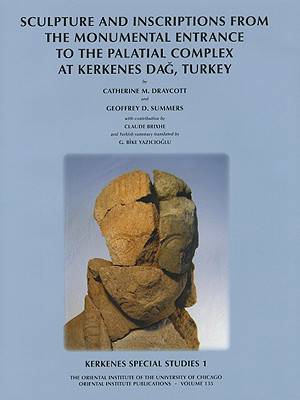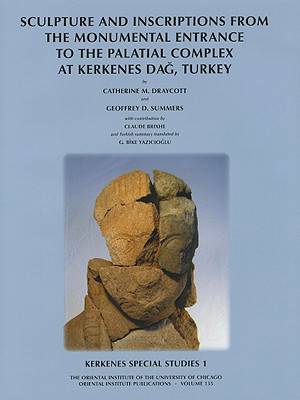
- Retrait gratuit dans votre magasin Club
- 7.000.000 titres dans notre catalogue
- Payer en toute sécurité
- Toujours un magasin près de chez vous
- Retrait gratuit dans votre magasin Club
- 7.000.000 titres dans notre catalogue
- Payer en toute sécurité
- Toujours un magasin près de chez vous
Kerkenes Special Studies 1
Sculpture and Inscriptions from the Monumental Entrance to the Palatial Complex at Kerkenes Dag, Turkey
Catherine M Draycott, G D Summers
106,95 €
+ 213 points
Description
Between 2003 and 2005, various remains of sculpture and fragments of an important inscription in the Old Phrygian language were unexpectedly found during excavations at the sixth century BC walled city on Kerkenes Mountain in the highlands of Central Turkey. These unusual finds have a significant role to play in the interpretation of the site and the interpretation of Phrygian history and culture. Large-scale sculpture in the round and small reliefs have distinctive characteristics so far unattested within territory inhabited by Phrygian speakers, while the extensive inscription names individuals so far unknown. Together, they attest to an ambitious and distinctive identity of power at this relatively remote mountaintop city, which may be equated with the strongly fortified place of Pteria mentioned in Herodotus, and which may have flourished for a brief period between the death of King Midas of Gordion and the conquering of Anatolia by the Persian King, Cyrus the Great. This volume presents these striking new finds, all of which come from the Monumental Entrance to a sector of the city known as the Palatial Complex. An introduction to the archaeological context is followed by a detailed catalog of the sculpted fragments, associated architectural fragments, and the inscribed fragments. Within the catalog there is erudite discussion of comparanda aimed at placing the unique material in its wider cultural and historical context, as well as a tentative reconstruction of the major pieces into a single monument. Rounding off the work is a commentary on the Phrygian inscription by Prof. Claude Brixhe. The volume is profusely illustrated with line drawings and photographs of every fragment together with a set of color plates that highlight the violence done to the monuments when the city was looted and burnt in the mid-sixth century BC. A Turkish summary is provided.
Spécifications
Parties prenantes
- Auteur(s) :
- Editeur:
Contenu
- Nombre de pages :
- 87
- Langue:
- Anglais
- Collection :
Caractéristiques
- EAN:
- 9781885923578
- Date de parution :
- 01-12-08
- Format:
- Livre relié
- Format numérique:
- Genaaid
- Dimensions :
- 234 mm x 302 mm
- Poids :
- 1088 g







